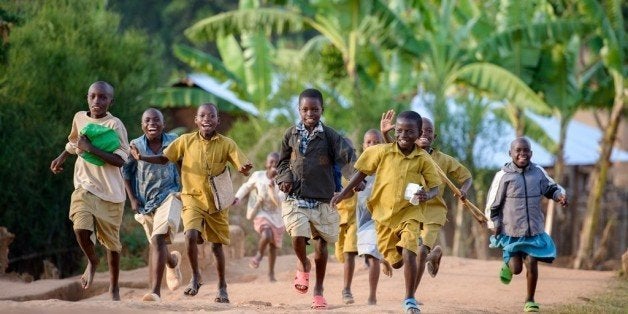
As a keen runner, I'm thrilled to be in Rio de Janeiro this week for the start of the 2016 Olympic Games. But I'm not here to enjoy the carnival-like atmosphere or cheer on my national team (it's Ethiopia, by the way).
Instead, I'm participating in the other big event taking place in Rio. One day before the Opening Ceremonies, leaders will gather at Casa Brasil for the Nutrition for Growth event - a key moment and important opportunity to help solve the Olympic-sized problem of child malnutrition.
I'm particularly excited to attend the event, hosted by the Government of Brazil, because here is a country that has significantly improved food security and nutrition over the past few decades. Brazil's approach shows that long-term political commitment can deliver real results; stunting rates for children declined from 19 percent to 7 percent between 1989 and 2007, and exclusive breastfeeding rates among babies under six months jumped from 2 percent in 1986 to 39 percent in 2006.
With all countries agreed to meet ambitious global goals - including the goal to end all forms of malnutrition by 2030 - what can we learn from Brazil on how to achieve these results?
As the recently released 2016 Global Nutrition Report shows, there are a few key reasons for the country's success. These include increasing the incomes of the poorest families, pressure to end hunger from vibrant social movements, the creation of mechanisms to coordinate the plans and actions of different government departments, the use of data and evidence to better target efforts and the introduction of laws to protect against marketing of breastmilk substitutes.
Many countries around the world now have plans to improve nutrition for their populations - and some of them are even scaling up efforts in ways similar to Brazil. But we're a long way from achieving our collective goals. More than half of the six million under-five child deaths each year are due to poor nutrition, 1 in 4 children under-five worldwide are stunted - with implications for their physical and cognitive development - and 1 in 9 people worldwide are still hungry.
We know that investing in nutrition pays off. Every $1 invested in proven nutrition programmes returns $16 of benefits. Despite this, too little is currently spent on nutrition. At this week's Nutrition for Growth event in Rio, Brazil will play host to leaders from a number of governments, international organisations and civil society. The event should act as the starting gun for a second, stronger phase of Nutrition for Growth - one where we develop new and improved commitments to nutrition, ahead of a pledging summit to be held in 2017. Increased investment in nutrition is urgently needed if we hope to scale up action to meet the hunger and nutrition goals, save lives and improve economies.
The organisation I represent, World Vision, made a commitment at the first Nutrition for Growth event, held in 2013 in London and co-hosted by the UK and Brazilian governments. We pledged to spend nearly US $1.2 billion on nutrition-specific interventions, like micronutrient supplementations, appropriate breastfeeding and management of severe acute malnutrition, as well as nutrition-sensitive interventions across our agriculture and livelihood development programmes.
Our experiences across the world fuel our conviction that we can and must work toward a world that is free from hunger and malnutrition.
We're investing in programmes like the Nutrition Club approach in Vietnam, which links families to nutrition, health, agriculture and livelihood opportunities and has been scaled up to over 1,250 villages in rural and mountainous areas across 12 provinces. We're improving nutrition in some of the hardest places. In 2015, World Vision worked with Ministries of Health in 12 countries, including Afghanistan and Pakistan, to treat more than 150,000 children under-five for life-threatening acute malnutrition. During the same period, we reached close to 60,000 pregnant and breastfeeding women in seven countries with supplementary feeding programmes.
In addition, we're supporting the next generation of social movement builders through our work to empower children and young people. In Brazil, this means supporting an initiative called MJPOP (Youth Monitoring of Public Policies) that prepares young people to lead political processes in their communities. They learn to identify problems and work with residents of their neighbourhoods to reflect on the availability and quality of services, collectively building a plan of action with government and other stakeholders. The MJPOP movement includes more than 1,000 adolescents and young people in 30 locations across Brazil and has had local impact on issues such as health and nutrition, education, child protection and sanitation.
The crowds in Rio this week are a good reminder that it takes a cast of thousands to stage the Olympic Games. The event would fail if, say, the athletes, or the stadium builders, or the city officials or the supporters refused to participate. The same goes for defeating hunger and malnutrition. I hope and pray that, under Brazil's leadership, other governments and many other crucial actors will take full advantage of the Nutrition for Growth event and forthcoming pledging summit; that they will all consider this a golden opportunity to make real strides in the marathon effort needed to end malnutrition and build a hunger free world.